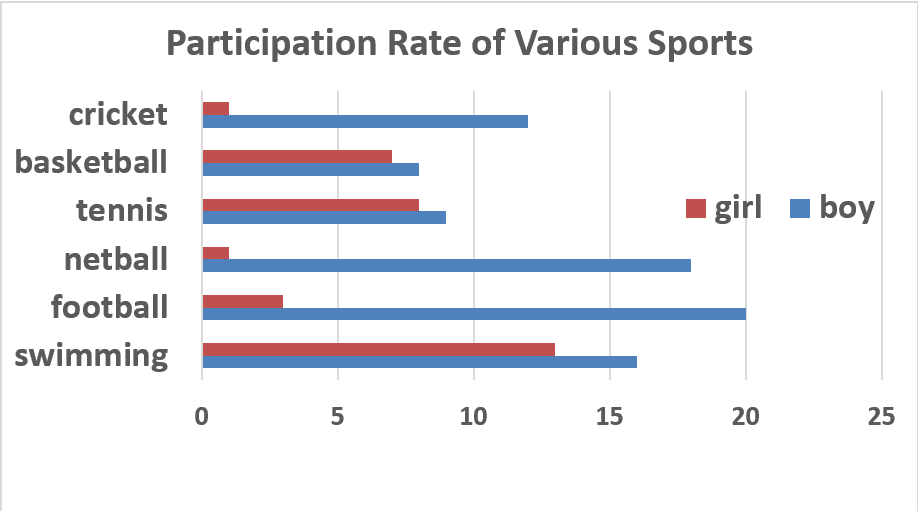托福写作提升不仅需要掌握一些写作的套路,更需要通过实际的例子去做提升。下面小编就和大家分享托福写作提升,希望能帮助到大家,来欣赏一下吧。
托福写作提升丨实例解析如何让写作言之有物
一.托福写作实例解析
题目:Nowadays, food has become easier to prepare. Has this change improved the way people live? Use specific reasons and examples to support your answer。(如今食物变得越来越容易准备。这种变化是不是改善了人们的生活?)
解析:该问题中提供给考生探讨的要点是食物准备方式的改变是否提高生活质量。对此问题,一些考生马上就联想到:食物容易准备节约了时间,并就此给出段落中心词。但结合文章论点稍微深入思考一步就会发现,时间缩短这一项改变虽然是事实,但对于生活质量的影响并不直接,如果作为主要论点给出的话会使读者觉得该支持理由与主题观点并没有直接关联。所以对于这种容易想出但与文章中心关系并不密切的拓展思路就需要能及时舍弃。
二.托福写作提升方法——如何言之有物
1.写作思路剖析
就上面这道题目而言,有的考生注意到了食物准备时间缩短与生活质量改善之间的思路跳跃,因此在两者中间补充说明,食物准备时间缩短能让人性情改变,从而影响人们的生活质量,构思时觉得该立意比较新颖,又能切合主题,继续写下去不无可能。但真正落笔时却不知道该如何说明人们性情转变这一抽象情况,并且自己平常生活中对此也并无较深入的感受和经验,结果说了一句话拓展就不得不匆匆收尾,导致读者要不就读得“意犹未尽”,要不就干脆觉得“云里雾里”。与其这样,还不如选个常见思路,如:快速的生活节奏造成压力,来展开拓展,这样即能展示语言功底,也能显示思维缜密的写作方向。
2.写作具体展开方法
这其实是托福写作整个构思阶段的重头。要立意,就是要明白自己表达的对象是什么,明确立场。然后站在这个立场上,挑选支持自己的论点。在整理行文思路时,考生所进行的其实是个发散思维的过程,而立意,则是要把思维收回来,组织化,理清它的脉络纹路,让它们有着各自的特征,又能协调地为同一目的服务。
托福写作辅导提到能够说服读者的议论文,在论点选择上应该遵循一个原则:三个(或者两个)论点虽说要符合一条明线:支持全文观点,但不能在各自的论述层面上有交叉。比如在上题所给的理由中已经列出:快速的生活节奏造成压力,有的考生继续拓展第二支持理由:人们正在沉沦于速食中,丧失享受生活的品位,这两点看上去都与主题相关,并且有各自的中心点,但是稍微拓展就会发现,其实两者都是围绕人们的心理健康这一基本点所进行的思维扩展,与其分开两段来写,还不如先给出影响心理健康这一中心,再分原因和不同情况进行扩展论述。这样即体现了同一段落内部论述的全面性,又避免出现两段中内容及语言的重复表达。
我们通过对一道写作题目具体分析为大家讲解了托福写作提升的方法。托福写作想要提升必须要言之有物,想要言之有物,必须要写出实际的内容来,但是这些都要在贴合主题的前提之下进行。大家在托福写作练习中可以根据上文中提供步骤去剖析题目,展开思路,然后写出具体的文章。
托福写作模板:老师很难既受欢迎又有效教学
题目:
Do you agree or disagree with the following statement:
It is difficult for teachers to be both popular (well-liked) and effective in helping students to learn.
Use specific reasons and examples to support your answer.
范文1:Argument 1 (for)
It is very difficult for a popular teacher to really help the students learn to the best of their abilities. Popular teachers are more concerned about their image than about pushing students to do their best. As a result, popular teachers are often too easily distracted from the class content, they make the class too easy, and they focus on the students that respond best.
Popular teachers are invariably very social. They try to show that they are interested and involved in the students’ world by discussing sports, television shows, and other things which are not related to the subject. Although such conversation may be fun for the students, it leaves less time to cover class material. I had a teacher once who was so talkative that he only completed half of the topics on the syllabus. The students like myself who were interested in learning the material had to read the second half of the textbook on our own. Sharing funny anecdotes about his weekend activities, that professor did not effectively teach what needed to be covered.
Another potential problem with popular teachers is the desire to give good grades. If a teacher fails a student, the student invariably is not happy. Therefore, popular teachers often make tests very easy so that students can get high scores. This may satisfy students who don’t care about mastering a subject, but the top students are not challenged or pushed to study and reach a higher level of understanding. Giving everyone good grades does not make the class better; itkeeps the stronger students from testing their limits.
Finally, popular teachers often focus on the students who respond well to their teaching style and keep the class entertaining. They call on those students who answer the questions in a funny way rather than students who address the topic in a thoughtful manner. They may even highlight the accomplishments of a few students during their conversations rather than trying to engage and encourage everyone. As a result, some students feel left out, and may even stop attending class. The unpopular students lose motivation and do not excel because they are ignored in favor of students that cater to the popular teacher.
Popular teachers often do a poor job in helping all students learn because they are more interested in socializing than teaching the class material, they want to give good grades rather than challenge students, and they focus on a few students who like the teacher.
help the students learn to the best of their abilities 帮助学生尽其所能地学习
are often too easily distracted from 经常太容易分心
leave less time to do X 为做X留更少的时间
the second half of X X的后半部分
keep the stronger students from testing their limits 阻止较强的学生去测试他们的极限
left out 被忽视,被遗忘
cater to 迎合
范文2:Argument 2 (against)
Popular teachers can be effective in helping students to learn. In fact, the very reason that some teachers are popular is that they make the information they are presenting interesting, are available to answer questions, and they take an interest in the students’ activities.
The primary role of a teacher is giving information to students. If teachers create appealing programming that relates to the real world, students will pay attention. The teacher is well-likedbecause the students enjoy learning. It is easier for the student to remember the material, too, when it is presented in a fun manner. For example, I will never forget a physics lesson in which we threw eggs into different types of basket. Although some of the alternatives were messy, I still remember how a flexible surface that catches and moves with the egg will absorb the impact of even the strongest throw, so the egg stays intact. I remember the concept because the teacher was good at engaging the students.
Teachers who are not natural showmen can still be popular by being available to answer any question. Teachers who explain in different ways can clarify doubts, making even the toughest lessons understandable. Teachers can be available in different ways, too. Some teachers are willing to interrupt lessons to explain points. They allow students to ask questions at any time so that no one is confused or left behind. Other teachers have an open office policy where students can drop by and ask questions in a one-on-one setting. Whatever method the teacher uses, it can help the students understand the material and perform better.
Finally, popular teachers take an interest in their students. Talking about hobbies or goals may seem detrimental to a solid education, but in reality, it can help the teacher explain concepts in ways that the students can relate to. Once I was having a hard time in a math class. That teacher sat down and asked about my interests, and he got excited to hear I liked quilting. He pulled out some paper and showed how the things we were learning could help with my hobby: I could calculate the yardage for a pattern or proportionately change the design’s size. I realized that his popularity was not just based on his chattiness; he used the students’ hobbies to make math practical and interesting.
Popular teachers gain their popularity by doing the things that help students excel. They come up with creative lessons, are available to answer questions, and take an interest in their students. As a result, popular teachers can be very good at helping students learn.
is well-liked 受欢迎的
the teacher was good at engaging the students 老师擅于吸引学生
natural showmen 天生的表演家
drop by 顺便拜访
in a one-on-one setting 在一对一的环境下
take an interest in X 对X感兴趣
help students excel 帮助学生出类拔萃
托福写作模板:如何提升演讲能力
题目:
After your presentation, which way would you choose to identify your weakness and improve your presentation?
1) reviewing the recording on your own;
2) inviting your colleagues or classmates to make suggestions for improvement.
范文1:For Choice 1
To improve my performance after giving a presentation, it is best to review a recording of it by myself. This process lets me observe all aspects of the presentation, evaluate changes at my own pace, and avoid being defensive.
First, a video recording gives significantly more information than just relying on comments made by colleagues or classmates. I can analyze and improve on even small points that others may not have noticed or found worth mentioning. For example, a couple years ago, I gave a presentation that I had extensively prepared for. It had strong organization and flow. Classmates raved about the content, but mentioned that I looked scared. I was confused, because I had felt confident. However, I noticed in the video later that I was continually fingering my notes. For my next presentation, I placed the notes within view but did not hold them, rendering my appearance more professional.
Another reason I prefer watching a recording is my pace of learning. I can focus on the points I want to redo, replaying the material as often as I want, confirming even tiny details. In fact, I can even take long breaks to think about what I see or to try out alternate delivery styles. I do not have to inconvenience my friends by asking them for feedback or taking up their time. If others are involved in the evaluation process, I feel much more rushed because I do not want to bother people who have agreed to help me.
Finally, reviewing a recording by myself eliminates a serious problem that hinders progress: my pride. I do not like to admit it, but I often get defensive about feedback and want to explain why certain things happened. I feel resentful about negative comments rather than see them as stepping stones towards improvement. It is a natural tendency, but it definitely hinders my ability to assimilate outside feedback. Furthermore, friends try to be polite, so they may not mention minorpoints that I might have improved because they don’t want to seem too critical. Emotions get in the way of a thorough critique.
To improve my future performance, I find it best to review videos of my presentations by myself. I can evaluate all aspects of the presentation, take as much time as I need, and avoid the inevitable problem of emotional involvement swaying the critique.
at my own pace 按照自己的步伐走
rave about the content 对内容赞不绝口
place the notes within view 把笔记放在眼前,把笔记放在视线范围内
inconvenience my friends 麻烦我的朋友
take up their time 占用他们的时间
see them as stepping stones towards improvement 把它们看作是迈向进步的垫脚石
get in the way 妨碍,阻碍
范文2:For Choice 2
It is essential to get the feedback of people in the audience to learn about mistakes and improve on a presentation. Spectator critiques help identify the big picture and reveal points that you can’tsee in an honest, unbiased way.
No matter how impartial you want to be, a self-evaluation is biased. It incorporates points that are not relevant to the performance you gave. For example, you may think you did excellent given your limited practice time or great amount of stress, but your audience is unaware of these factors. The viewers only evaluate what they see, which is a far more accurate measure of a presentation. A self-evaluation may also ignore issues that were “just accidents.” However, such points may reallybe important detractors that need to be addressed.
People in the audience also provide insight into the big picture. They only have time to note specific glaring details or outstanding highlights. Otherwise, their feedback gives you the overallimpression of the performance, which is something intangible and essential to the presentation’ssuccess. If you compare the feedback of several observers, you can isolate the main patterns. As a result, you can understand the most important parts that need changed. If you only refer to a video on your own, you may get caught up changing minor details rather than addressing the key elements that are needed to alter the overall flow or lasting effect.
Finally, classmates or colleagues may identify things you take for granted such as mannerisms, repeated words, or even problems with visual aids. One example is a teacher who gave a presentation using an old slide projector that kept jamming. The teacher apologized when that happened and kept going with the lecture. He had no idea how distracting it was, to the point that students remembered joking about which slide would get stuck next better than they remembered the content. The teacher, however, was so used to fixing the projector that he barely noticed it. The feedback showed him the value of replacing his visual aids with newer equipment, an issue he had never considered was important.
Since an audience gives you honest evaluations of the overall impression of a presentation and identifies points you may not see on your own, it is important to get feedback from people in the audience in order to improve your presentations.
spectator critiques 旁观者的评论
in an honest, unbiased way 以诚实、公正的方式
a far more accurate measure of a presentation 对报告或展示一种更为准确的评价
provide insight into the big picture 洞察全局
glaring details 明显的细节
outstanding highlights 突出的亮点
visual aids 视觉辅助
实例解析如何让托福写作言之有物
上一篇:托福独立写作4个高分误区解析
下一篇:如何提升托福写作框架结构





